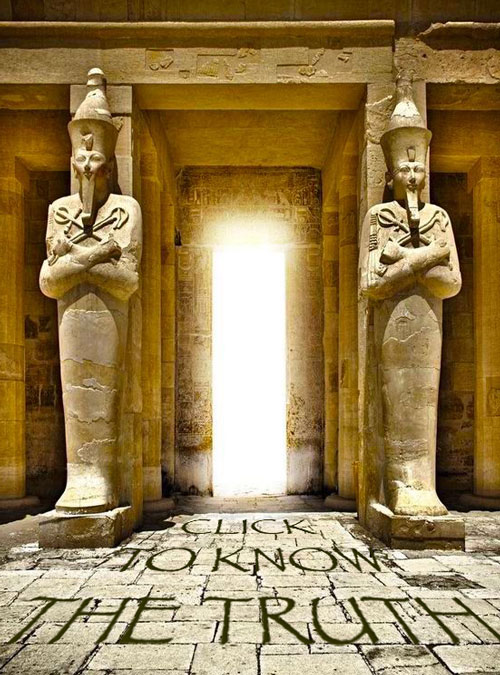The Sword of Truth
Pakal was a Maya king:

Kʼinich Janaab Pakal or simply “Pakal” was buried in a colossal sarcophagus in the largest of Palenque’s stepped pyramids. The building was called Bʼolon Yej Teʼ Naah “House of the Nine Sharpened Spears” in classical Maya. Though Palenque had been examined by archaeologists before, the secret to opening his tomb—closed off by a stone slab with plugs in the holes—was discovered by a Mexican archaeologist in 1948. It took four years to clear the rubble from the stairway leading down to Pakal’s crypt.
Once the tomb was opened, Pakal’s skeletal remains were still lying in his coffin, wearing a jade mask and bead necklaces, surrounded by sculptures and stucco reliefs depicting the ruler’s transition to divinity. Traces of pigment show that these were once colourfully painted, common to Maya sculpture at the time.

Pakal’s sarcophagus lid was made of a single stone. Rectangular in shape, it weighed several tons. There were carvings on the top and sides which narrated events from his life and those of his royal forebears. The southern side recorded the date of his birth and the date of his death. The massive lid could not even fit down the stairways—Pakal’s tomb was sealed first and the temple was built upon it later.
Kʼinich Janaab Pakal means “Great Sun Shield” in classical Maya. Here we are reminded of Psalm 84:11 “the Lord God is a sun and a shield” which is really a reference to the Merkaba. Pakal expanded Palenque’s power in the Maya states and initiated a building program that produced some of Maya civilisation’s finest art and architecture. One of the most enigmatic relics from this great leader was the lid of his sarcophagus:

Above: Pakal being reborn into eternal life
On top is a bird wearing a jewelled pectoral and bearing sacred mirror markings on its forehead and tail. The cut shell on his head and other deity markers identify him as Itzam Ye, the avian form of Itzamna, a sky god who participated in the creation of the world. All of the background art in this composition is portrayed recursively.

Above Pakal, we find the Sword of Truth thrusting downwards into his belly. As an inverted triangle, the tip of the dagger refers to purification. Here we experience the sword (sacrum) cleanly piercing the body of man. This symbolic action sacrifices physical bondage to release a path to enlightened freedom. This is the World Tree that is portrayed as a fractal and hence is difficult to recognise artistically.
Impaled on the dagger balances Pakal, who is depicted realistically. Even his attire is recognisable and can be identified from Maya culture. Pakal himself is balanced at the navel with his body arranged in the “V” shape of the sacrum. His hands are twisted with his left facing downwards and the right facing upwards—a reference to the female and male polarities within the human body.

Below Pakal, we find the fangs of the twin serpents. In other words, when the sword of truth pierces the stomach, the mirrored cobras rise up the spine and into the higher realms. This is the famous caduceus, but here we find a Maya version of it. The entire sarcophagus then, hints at the personal process required to achieve enlightenment.

Above: the House of the Nine Sharpened Spears still protects its secrets
So you, dear reader, must invite the sword of truth. You must combine the higher with the lower, life with death and light with darkness. You are royalty who only now is waking up. The balance you find will be your birthright—enlightenment!
